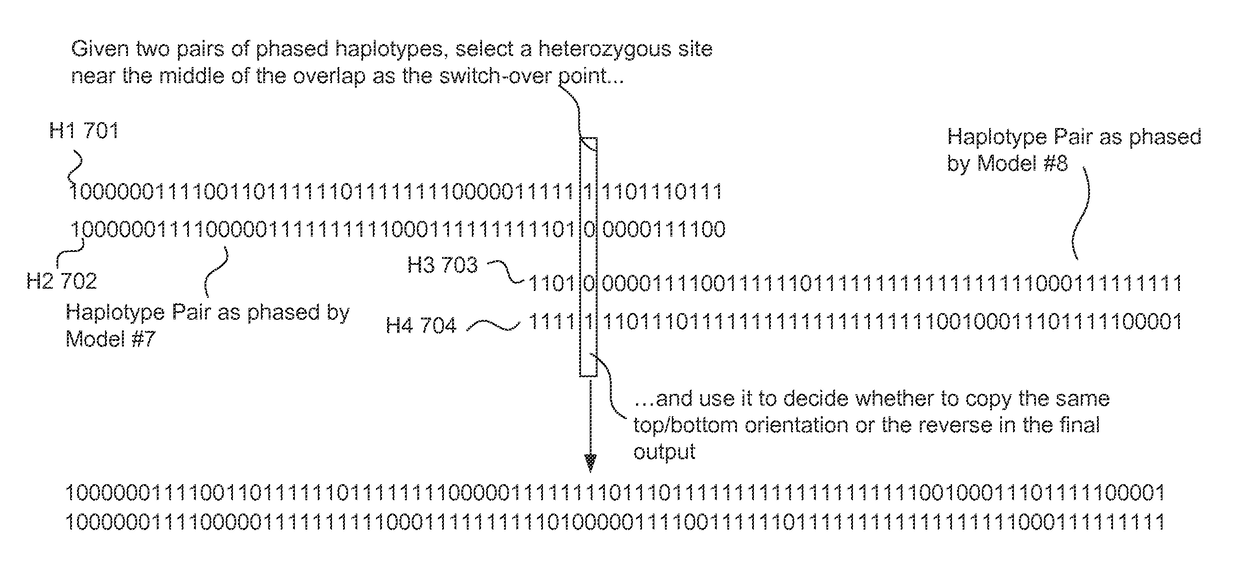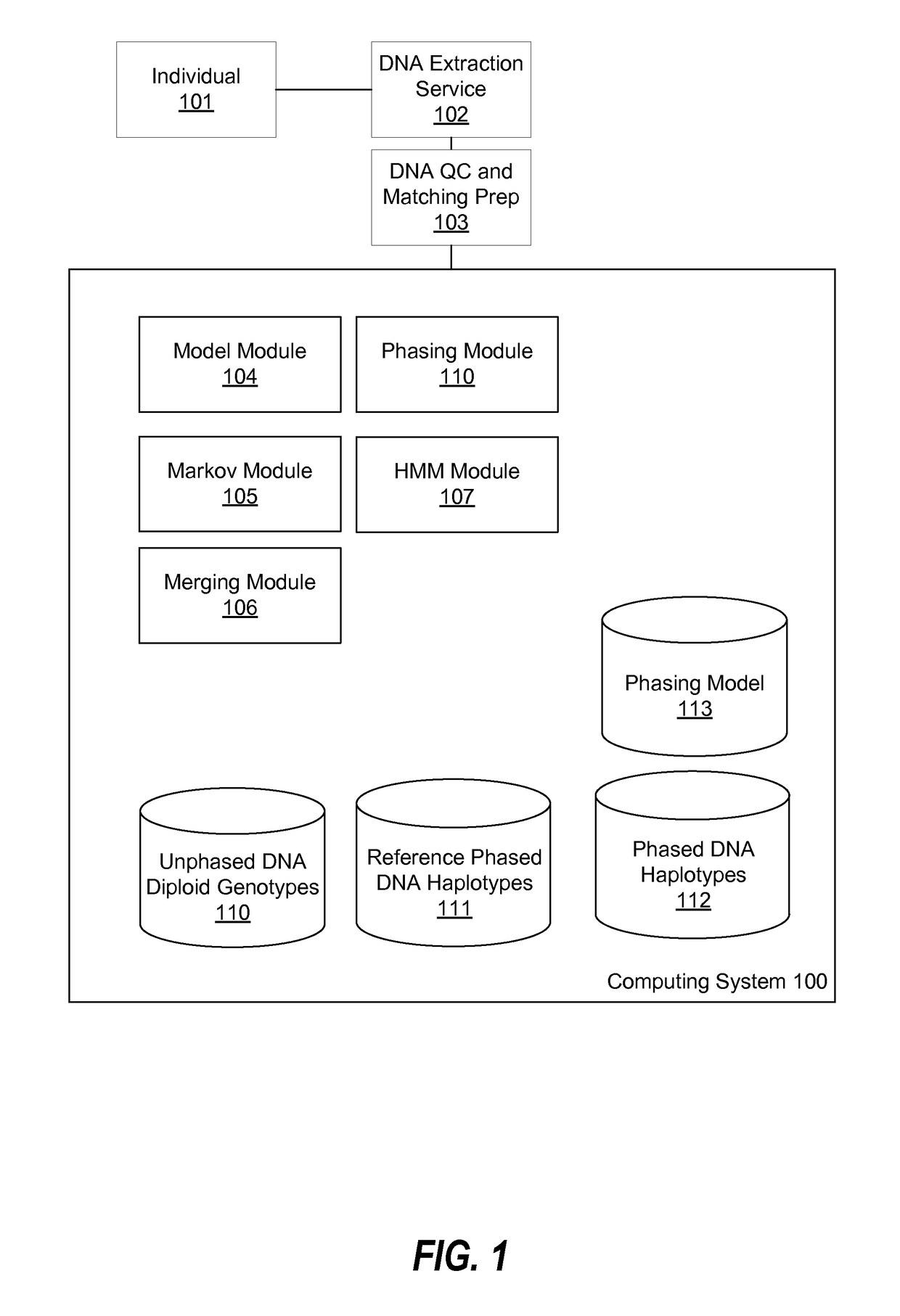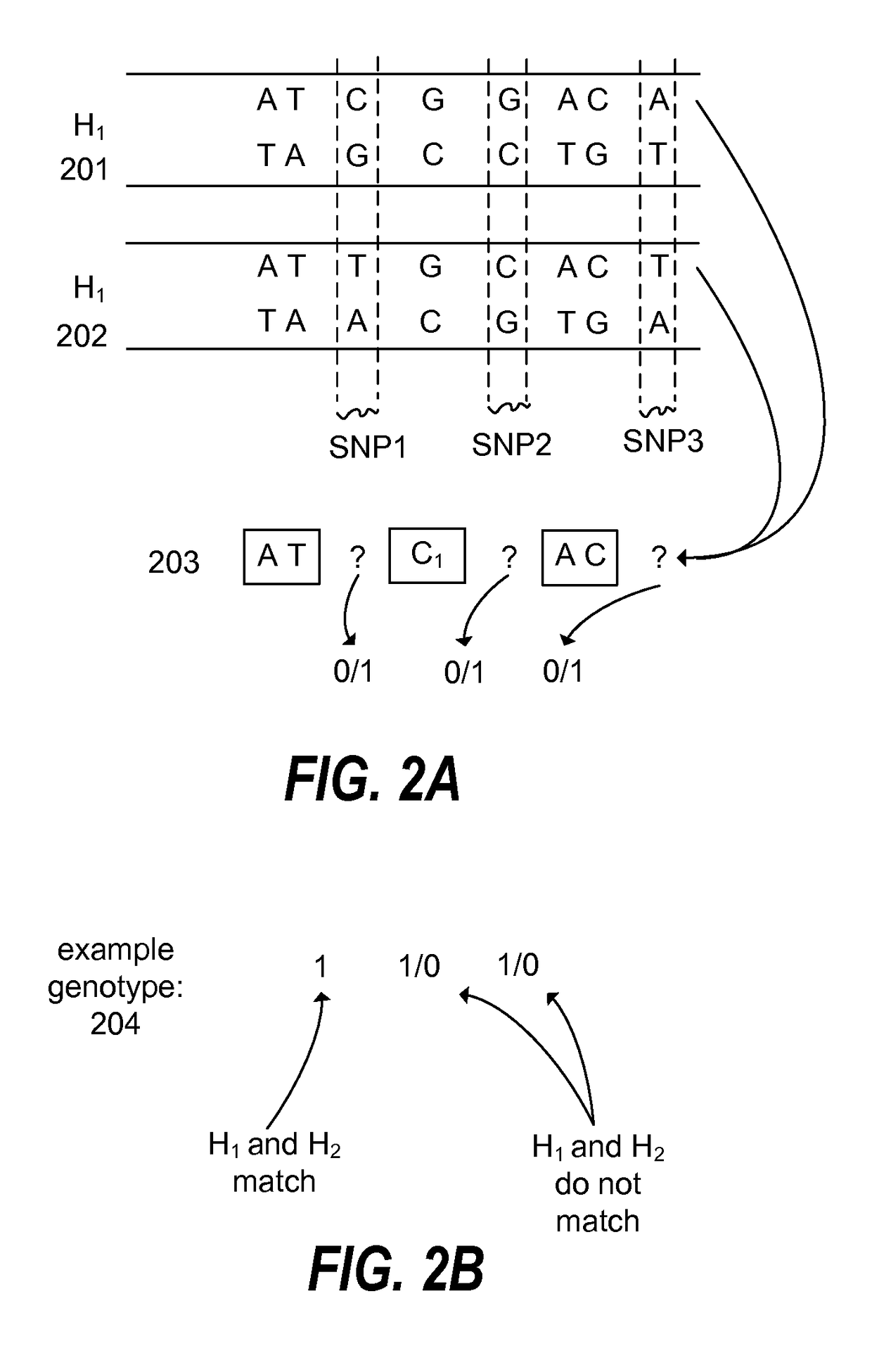Haplotype phasing models
a technology of haplotype and model, applied in the field of models for phasing genomic samples, can solve the problem that the approach is not practical for batches of hundreds of thousands of samples
- Summary
- Abstract
- Description
- Claims
- Application Information
AI Technical Summary
Benefits of technology
Problems solved by technology
Method used
Image
Examples
Embodiment Construction
I. Environment Overview
[0019]FIG. 1 is a block diagram of an environment for using a computer system 100 to phase diploid genotypes, according to one embodiment. Depicted in FIG. 1 are an individual 101 (i.e. a human or other organism), a DNA extraction service 102, and a DNA quality control (QC) and matching preparation service 103.
[0020]Individuals 101 provide DNA samples for analysis of their genetic data. In one embodiment, an individual uses a sample collection kit to provide a sample, e.g., saliva, from which genetic data can be reliably extracted according to conventional methods. DNA extraction service 102 receives the sample and genotypes the genetic data, for example by extracting the DNA from the sample and identifying values of SNPs present within the DNA. The result is a diploid genotype. DNA QC and matching preparation service 103 assesses data quality of the diploid genotype by checking various attributes such as genotyping call rate, genotyping heterozygosity rate, a...
PUM
 Login to View More
Login to View More Abstract
Description
Claims
Application Information
 Login to View More
Login to View More - R&D
- Intellectual Property
- Life Sciences
- Materials
- Tech Scout
- Unparalleled Data Quality
- Higher Quality Content
- 60% Fewer Hallucinations
Browse by: Latest US Patents, China's latest patents, Technical Efficacy Thesaurus, Application Domain, Technology Topic, Popular Technical Reports.
© 2025 PatSnap. All rights reserved.Legal|Privacy policy|Modern Slavery Act Transparency Statement|Sitemap|About US| Contact US: help@patsnap.com



